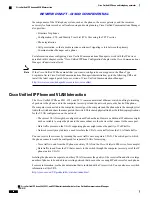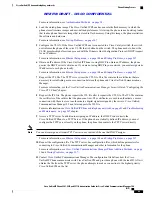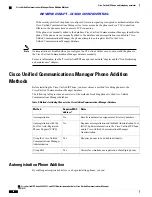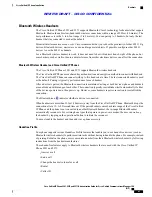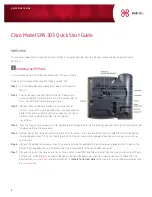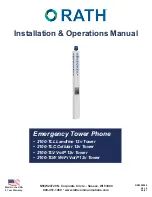
Phone Startup Process
When connecting to the VoIP network, the Cisco Unified IP Phone 8961, 9951, and 9971 goes through a
standard startup process. Depending on your specific network configuration, only some of these steps may
occur on your Cisco Unified IP Phone.
1
Obtain power from the switch. If a phone is not using external power, the switch provides inline power
through the Ethernet cable that is attached to the phone.
For more information, see
Cisco Unified Communications Manager Phone Addition Methods, on page
50
and
Startup Problems, on page 267
.
2
(For a Cisco Unified IP Phone 9971 in a wireless LAN only) Scan for an access point. The Cisco Unified
IP Phone 9971 scans the RF coverage area with the radio. The phone searches the network profiles and
scans for access points that contain a matching SSID and authentication type. The phone associates with
the access point with the highest RSSI that matches with the network profile.
For more information, see
Cisco Unified Wireless AP Interactions, on page 90
.
3
(For a Cisco Unified IP Phone 9971 in a wireless LAN only) Authenticate with the access point. The Cisco
Unified IP Phone begins the authentication process. The following table describes the authentication
process:
Description
Key management options
Authentication type
Any device can authenticate to the access point.
For added security, static WEP encryption might
optionally be used.
None
Open
The phone encrypts the challenge text by using
the WEP key and the access point must verify the
WEP key that was used to encrypt the challenge
text before network access is available.
None
Shared Key
The RADIUS server authenticates the username
and password before network access is available.
For more information about name and password
authentication, see
Wireless Setup menu, on page
108
.
None
LEAP or EAP-FAST
The phone looks for an access point with one of
the key management options enabled. The
username and password are authenticated by the
RADIUS server before network access is
available.
WPA, WPA2, or CCKM
Auto (AKM)
The phone looks for an access point that has one
of the key management options enabled.
Authentication uses the configured
WPA-Pre-shared key or WPA2-Pre-shared key
WPA-Pre-shared key,
WPA2-Pre-shared key
Auto (AKM)
Cisco Unified IP Phone 8961, 9951, and 9971 Administration Guide for Cisco Unified Communications Manager
10.0 (SIP)
48
Cisco Unified IP Phone and telephony networks
Phone Startup Process
REVIEW DRAFT - CISCO CONFIDENTIAL









